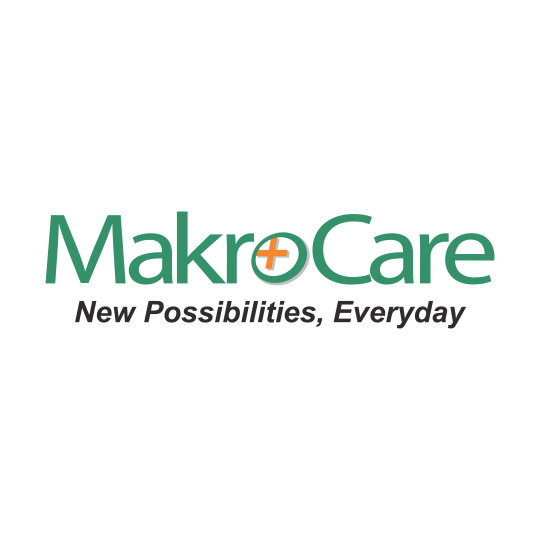#medical products
Text

Not science officer blue but it’ll do! De Kelley/Dr. McCoy has been my inspiration on this journey to becoming a paramedic, roughly 85 days to being able to officially work as a paramedic.
#deforest kelley#dr mccoy#de kelley#leonard bones mccoy#leonard mccoy#medical#medical products#medical professionals
16 notes
·
View notes
Text
Medicinal Plant Trading in Kovilpatti Taluk, South East Tamil Nadu

Abstract
Pharmaceuticals, herbal remedies, teas, spirits, cosmetics, sweets, dietary supplements, varnishes, and insecticides are just a few of the processed and packaged goods made from medicinal and aromatic plants (MAPs), which are also created in large quantities. In many instances, using basic materials from plants are considerably less expensive than using substitute chemical substances. Around the globe, 70,000 plant species are thought to be used in folk medicine. Objectives: The purpose of this investigation was to: document the most traded species of medicinal plants in the Kovilpatti Taluk, Thoothukudi District, Tamil Nadu, including parts used, Description of medicinal plant products, sourcing regions, harvesting frequencies; Materials and Methods: to profile and investigate the rationales for the involvement of stakeholders in medicinal plants related- activities; to understand socio-economic attributes of stakeholders who were traders, collectors. to assess constraints and opportunities for sustainable management of medicinal plants in the Thoothukudi District. The present also highlights the available medicinal plant products utilized for religious and rituals purpose in the herbal medicinal shop. The present study highlights the available medicinal plant products, quantity sold and the price of the medicinal plant products in the above retailer shops. Results: To study the socio-economic profiles of those involved in the trade, factors influencing prices of products and the impact of commercial harvesting on selected species. To record the available medicinal plant products utilized for religious and rituals purpose in the herbal medicinal shop. To find out ways and means to preserve and conserve these plant diversity treasures.

Introduction
Because forests offer fresh water, oxygen, and a range of beneficial forest products for both medicine and food, people who live in lowland and mountainous locations have profited significantly from them (Kala, 2004). The values that have historically been connected to various types of forests and the products they provide, such as medicinal herbs, have taken on a substantial significance in the twenty-first century (Stein, 2004; Kala, 2004). Additionally, more natural components, such as extracts from different medicinal plants, are being included in cosmetic goods (Kit, 2003). China and India, the two largest countries in Asia, contain one of the most varied selections of certified and generally well-known medicinal plants (Raven, 1998). Since the Indian subcontinent is well known for the wide range of forest products it produces and its long-standing medical traditions, it is urgent to uphold these traditional values in national and international contexts while also realising the ongoing trends in traditional knowledge development. Developing this sector could benefit persons in low-income areas who largely depend on medicinal plants as an additional source of income by raising living standards (Myers, 1991; Lacuna-Richman, 2002).

The continued expansion of acknowledgment of medicinal plants is attributed to a variety of factors, including an increase in the use of herbal remedies. Allopathic medicine may be used to treat a wide range of illnesses. However, many individuals are reverting to because to its high price and negative consequences. Herbal treatments with fewer negative effects (Kala, 2005). Unfortunately, due to overharvesting and the fast rising demand for plantbased medicines, the populations of some selected high-value medicinal plant species in the wild are severely under threat. Due to their slow growth rates, low population densities, and constrained geographic ranges, several of these medicinal plant species are particularly vulnerable to extinction (Kala, 1998; Nautiyal et al., 2002, Jablonski, 2004). However, since the discovery of the therapeutic uses of specific plant species, passed down from one generation to the next. On the other hand, because information about using plant organisms for good purposes has been passed down orally from one generation to the next, Due to the lack of awareness by younger generations as a result of a shift in perspective and ongoing socioeconomic changes, this information about useful plants has started to fade and become obsolete (Kala, 2002 and Kala, 2000).

In addition, indigenous knowledge on the usage of lesser-known medicinal herbs is rapidly dwindling (Kala, 2005). The realisation that traditional knowledge of many beneficial plants for medicine had been steadily fading in the past despite fresh interest at the moment made the necessity to examine the valuable information with the intention of growing the medicinal plants sector clear. Traditional healers faced an acute issue with the legal acquisition of wildlife products needed for traditional treatment. Conservationists and traditional healers observed high amounts of harvesting outside of protected areas (Botha, 1998).
Medicinal plants wealth in India Of the 17,000 different higher plant species found in India, 7,500 are utilised medicinally (Shiva, 1996). Based on the indigenous flora, this percentage of medicinal plants is the highest percentage of plants used for medical reasons in any country on the planet. Following Ayurveda and Siddha as the two oldest medical systems in the Indian subcontinent, Unani and Siddha have independently identified about 2000 different species of medicinal plants. The production of 340 herbal medications and their conventional uses are described in the Charka Samhita, an old literature on herbal medicine (Prajapati, 2003). Approximately 25% of medications in the modern pharmacopoeia are currently derived from plants, and many others are synthetic counterparts made from prototype chemicals identified from plant species (Rao et al., 2004).
Demand for medicinal plants Given that human societies in developing countries rely heavily on forest products for their economy and way of life, the ongoing growth in the human population is one of the factors raising concerns about our ability to meet our daily needs for food and medication. According to Samal et al. (2004), this phenomenon is causing the forest and the forest products to continuously erode, making it difficult to satisfy demand and preserve valuable bio resources. The Materia Medica is steadily expanding to include more and more species, but the requirements for their purity and accurate identification are not keeping up (Kaul, 1997). Only a small portion of the market's functioning, not on the whole, is revealed by the rates for medicinal plants and their derivatives on the open market.
The continued expansion in the number of people is one of the issues causing worry about our ability to meet our daily demands for food and medication because human cultures in emerging countries rely significantly on forest products for the economy and way of life. Samal et al. (2004) claim that this phenomena is causing the natural environment and its products to steadily deteriorate, making it challenging to meet demand and protect priceless bio resources. The number of species in the Materia Medica is continuously increasing, but the standards for their purity and exact determination are not keeping up (Kaul, 1997). The prices for medicinal herbs and derivatives of them only partially, not entirely, show how the market functions.
Collection of medicinal plants The majority of dried herbs used in medical and aromatic plant trade internationally. The majority of the time, both wild and developed kinds is traded in their "crude" or "unprocessed" forms. Plant sales are increasing on a global scale. More than 95% of the 400 plant species utilised to create medication by various enterprises come from India's wild populations (Udiyal et al., 2000). Due to continued use of several wild medicinal plant species and severe habitat loss over the past 15 years, a number of highvalue medicinal plant species have experienced population decreases over time (Kala, 2003). The biggest threats to medicinal plants are those that have an effect on any kind of biodiversity that is used by humans (Rao et al., 2004; Sundriyal, 1995).
The decline of customary laws that have regulated the use of natural resources is one reason putting medicinal plant species in jeopardy (Chimire et al., 2005; Kala, 2005).These ancient rules have been demonstrated that they are easily undermined by modern socioeconomic factors (Kit, 2003). Because it is believed that wild plant kinds have higher chemical contents, manufacturers typically prefer them over domesticated therapeutic plants. The seasons in which a species is harvested and the various stages of a species' growth also have an impact on the variety in chemical composition. The industry for medicinal plants is unreliable because of the vast clandestine commerce. The financial benefits and administrative costs for wild populations are frequently underestimated (Kit, 2003; Kala, 2004). Research conducted locally frequently provide vital data that support research conducted nationally or regionally. The current study aims to quantify the trade in medicinal plant goods in Tamil Nadu, Thoothukudi District, India, and to investigate socioeconomic factors that may have an impact on resource management.
Source : Medicinal Plant Trading in Kovilpatti Taluk, South East Tamil Nadu | InformativeBD
1 note
·
View note
Text
Living with a chronic illness presents a unique and ever-changing set of challenges that require constant adaptation and resourcefulness. Managing symptoms, adhering to treatment plans, and maintaining independence are forms of self-care. To do so, access to reliable medical supplies is a lifeline.
0 notes
Text
Navigating the selection of medical supplies can be a daunting task, whether you’re a healthcare professional, a caregiver, or an individual managing your health. AMED COMMUNITY PHARMACY is dedicated to simplifying this process, offering a wide range of medical and surgical materials that cater to various healthcare needs.
0 notes
Text

0 notes
Text
#medical#weight#products#weightloss#weightlossproducts#health#medicine#healthcare#fat reduction#weight loss journey#medication#weight loss products#weight management#wellness#health and wellness#medical products#healthyliving#healthy life changes#healthy life choices#healthylifestyle#wellnessjourney#wellbeing#wellnessgoal
0 notes
Text
Navigating Regulatory Success in Medical Devices: Unveiling the MakroCare Advantage

In the ever-evolving landscape of medical devices, securing regulatory approvals is a pivotal step towards market success. Dive into the intricacies of regulatory submissions and discover the expert guidance offered by MakroCare.
Unlocking Regulatory Doors
The journey from innovation to market availability requires a deep understanding of regulatory nuances. On the MakroCare Regulatory Registrations and Dossiers page, explore the comprehensive approach to compiling essential dossiers for successful regulatory submissions.
Expertise at Your Service
MakroCare stands out as a beacon in the realm of medical device submissions. As a key player in the industry, MakroCare specializes in providing expert consultancy, ensuring manufacturers navigate the complex regulatory landscape with confidence.
Why MakroCare?
Proven FDA 510(k) Success: Gain insights into the successful FDA 510(k) clearance facilitated by MakroCare consultants, streamlining the pathway to market entry.
Global Reach, Local Expertise: Explore MakroCare's proficiency in handling global submissions, offering manufacturers a bridge to regulatory approval in various jurisdictions.
Tailored Regulatory Strategies: Learn how MakroCare crafts personalized regulatory strategies, addressing the unique characteristics of each medical device and market.
Conclusion
In the competitive landscape of medical devices, a strategic regulatory approach is non-negotiable. MakroCare's expertise and services, outlined in detail here, pave the way for manufacturers to achieve regulatory success and bring their innovative solutions to the forefront of the healthcare industry.
0 notes
Text
AK Global Group - Medical Products Supply Russia

Discover AK Global Group for superior medical products supply in Russia. With a decade of expertise, we streamline processes, ensure timely deliveries, and offer sustainable solutions. Choose from a vast selection of high-quality products from leading brands. Our customer-centric approach simplifies procurement, allowing you to focus on patient care. AK Global Group, your trusted partner for medical supplies. Contact us for efficient and reliable medical product sourcing.
0 notes
Text
Patient safety is paramount in healthcare, and medical supplies form the foundation of this commitment. Sterile instruments, disposable gloves, masks, and other protective gear create a safe environment for patients and healthcare providers. The meticulous use of these supplies helps prevent the spread of infections, safeguarding vulnerable individuals undergoing medical treatment.
0 notes
Text
5 reasons to choose a purpose driven product design agency
Alignment with Values: These agencies prioritize designs that resonate with your core values, ensuring a product that's not just functional but meaningful.
Innovative Solutions: They often think outside the box, creating unique, impactful products that stand out in the market.
Consumer Connection: Purpose-driven designs connect deeply with consumers, fostering loyalty and a strong brand identity.
Sustainable Practices: Such agencies typically emphasize sustainability, aligning with growing consumer demand for eco-friendly products.
Long-term Impact: Products designed with a purpose are more likely to have a lasting impact, both commercially and socially.
Iterate is a leading product design agency in the United kingdom, creating the products that enhances the lives of users & spreading the positive influence in the world, creating a product is a challenging job, but our team are skilled enough to know what takes product in to the market and how a product could be a successful.
Visit our website if you have any product ideas you want to transform it to a finished product. https://iterate-uk.com/
#branding#design#product design engineering companies#product design company#product design#medical products#success#new product development agency
0 notes
Text

EasyAid Medical is dedicated to delivering excellence in every health care product we offer. Choose us for reliable, high-quality supplies that prioritize your well-being.
#EasyAid Medical#Health Care Products#Medical Products#Medical Supplies#EasyAid Store#Quality Medical Products#Healthcare Convenience
0 notes
Text
Anesthesia Machines
Anesthesia Machine provided with latest refinements in ergonomics and systems integration with an advanced and easy to use anesthesia platform. Equipped with double-tube oxygen flow meter, round evaporator and standard loop- system. Main body is made up of high strength plastic and resistance towards chemical adhesives. High precision vaporizer is designed with a stable concentration unit.
https://www.abimed.com/anesthesia-machines?utm_source=tumblr&utm_medium=CDA-Selina_Carter

1 note
·
View note
Text
In its September meeting, the safety committee (Pharmacovigilance Risk Assessment Committee [PRAC]) of the European Medicines Agency (EMA) confirmed that atrial fibrillation will now be included as a common side effect in the Summary of Product Characteristics for medicinal products containing omega-3-acid ethyl esters. Should atrial fibrillation develop, intake of the medication must be stopped permanently.
0 notes
Text




Custom precision medical product accessories,Pictures or samples both are
0 notes